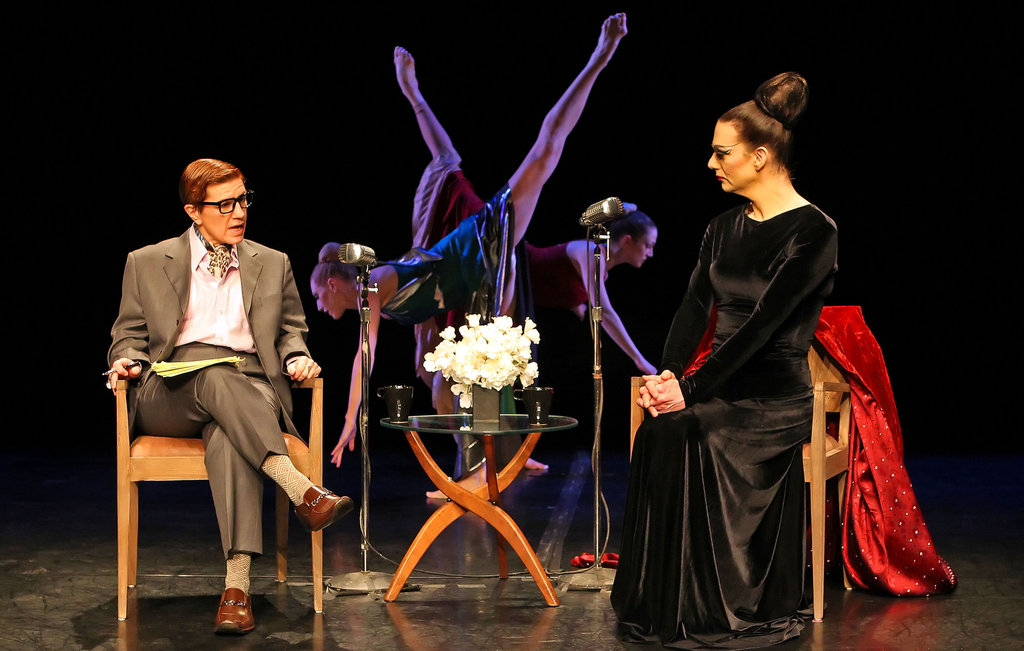This piece is part three of a series about dancing, making, and dreaming during the global pandemic, inspired by colleagues who are using embodied and community-based strategies to invent new ways of being alive together. Part one can be found here and part two can be found here.
“If you’re craving touch and you’re inside of social isolation… touch a plant,” says absurdist performer Alex Tatarsky (New York City) in her video Amateur Foraging!, created in collaboration with Shane Riley. She drags greenery out of the ground at an industrial site and discusses the politics of the plants she finds. As an invasive species that can destroy concrete with its roots, “Japanese Knotweed has the capacity to destabilize the very concept of property.” She eats them raw, “delicious,” and says, “as an amateur I often don’t know what I’m eating.” When she finds lemon clover, she kneels down and gnaws at the tender leaves with her teeth.
Entering week seven of quarantine, I forage my city for something recognizable. As I bike through Philadelphia I see a little girl pushing a baby doll stroller next to her mother. Both of them wear identical masks and I buckle from the weight and strangeness of their presence. Another parent/child pair run together in the street. The tween-age child impressively keeps up with her long-legged mother. When her mother looks away from her, the child starts to cry, but keeps running.
Another day last week would have been particularly bizarre to my two-month-ago dancing/bodyworking/socially proximate self. I helped someone appeal their rejected unemployment application; called recently incarcerated people who had been bailed out by the Philadelphia Community Bail Fund to help them navigate social services; ran a video call for a neighborhood group, muting/unmuting people while sorting laundry. I listened for children screaming [mute], and watched for people silently moving their mouths [unmute]. I never dreamed I’d have the reason, will, or skills to volunteer remotely in these ways.
But I still dance. I am moved (and stilled) by Alexandra Beller’s (New York City) guide to making choreography in this moment, Isolation, Obstacles, Toxic Positivity, and Making Art In Crisis, in which she offers permission to:
- Grieve
- Give up
- Be depressed
- Not make art
- Do it differently than your friends/family/colleagues
- “Sell out”
- Not try
- Not try harder
- Pivot
- Not care
I bring these directions into a Virtual Shared Solo Practice led by Kalila Kingsford Smith (Philadelphia). She asks us what we want to get out of the practice. Accountability. Company. Inspiration. Feedback. Unsure? Kalila invites us to work on our own for 30 minutes. I immediately fall to the floor and spend about 20 of those minutes resting. I must have needed a group practice for permission to rest because I hadn’t been able to settle on my own. Then I stir awake and become curious about a dance I had started with my stool on wheels. I play with rolling, spinning, and partnering with the stool. I envision my online co-workers are my audience and imagine what they must see from their screens. Then I become transfixed by the twirling and gliding of my hands brushing on the floor as I spin and wonder if I could record this dance from my vantage point… Can I tape my phone to my forehead? What do the limitations of this quarantine provide my creative practice? New perspectives and approaches. And also, so much is lost, distorted, weird.
A friend now inexplicably has eight cats. Another is selling toilet paper on Facebook with the proceeds going toward the bail fund. One reports that he reflexively cringed when he saw a student sneeze on his computer screen. I now belong to a group on social media in which we pretend we’re living in an anarchist collective, posting about fictional chore wheels and house meetings that will never convene. Bickering about dishes, quiet hours, and companion animals with strangers in a group where everyone has agreed to address each other as if COVID-19 doesn’t exist is a comfort and a source of nostalgia for the times when I lived in communal houses.
Actor and film/theater maker Irina Varina (Philadelphia/New York City) “documents people’s dreams about the kind of world they wanted to live in,” in her short dance film, Dreaming Space, which is filled with melancholy and longing. Christina Gesualdi rolls down her carpeted stairs head first, past a dog, in a yellow long sleeved top and jeans. Desirée Hall cartwheels in her bedroom. Varina reads Toko-pa Turner’s book, Belonging: Remembering Ourselves Home in a bathtub full of water while clothed with sunglasses on. Maddie Hopfield sits on her bed in the dark, eyes closed with her head turned to the side. She slowly slides two fingers inside her mouth. I see these whimsical vignettes not as aspirations toward a different world we can dream up, but as examples of how we might mend the broken heart of the world we’ve been handed.
I “receive” a virtual haircut from Ashley Tini (Philadelphia) who teaches me how to twist my curls and drag scissors down the twists to tame the beast on my head. I apply makeup for parties on my computer and have been on “dates” with someone I’ve never touched.
We’re trapped in adjacent snow globes.
We’re suspended in elevators driving downward fast.
We’re in two passing submarines.
We’re on a space walk.
We’re in the zoo.
Two animals with blood and hearts.
*Maddie Hopfield and Kalila Kingsford Smith are writers for thINKingDANCE.






